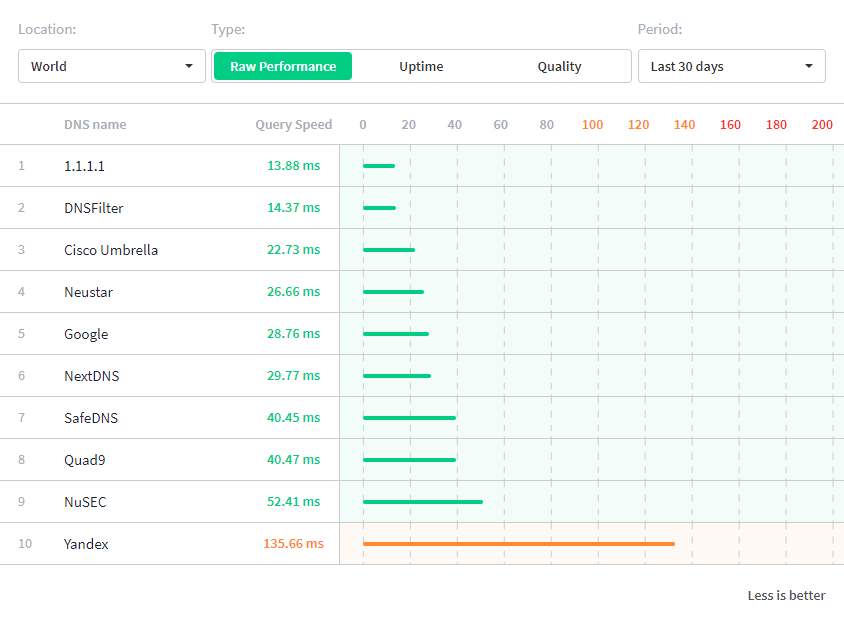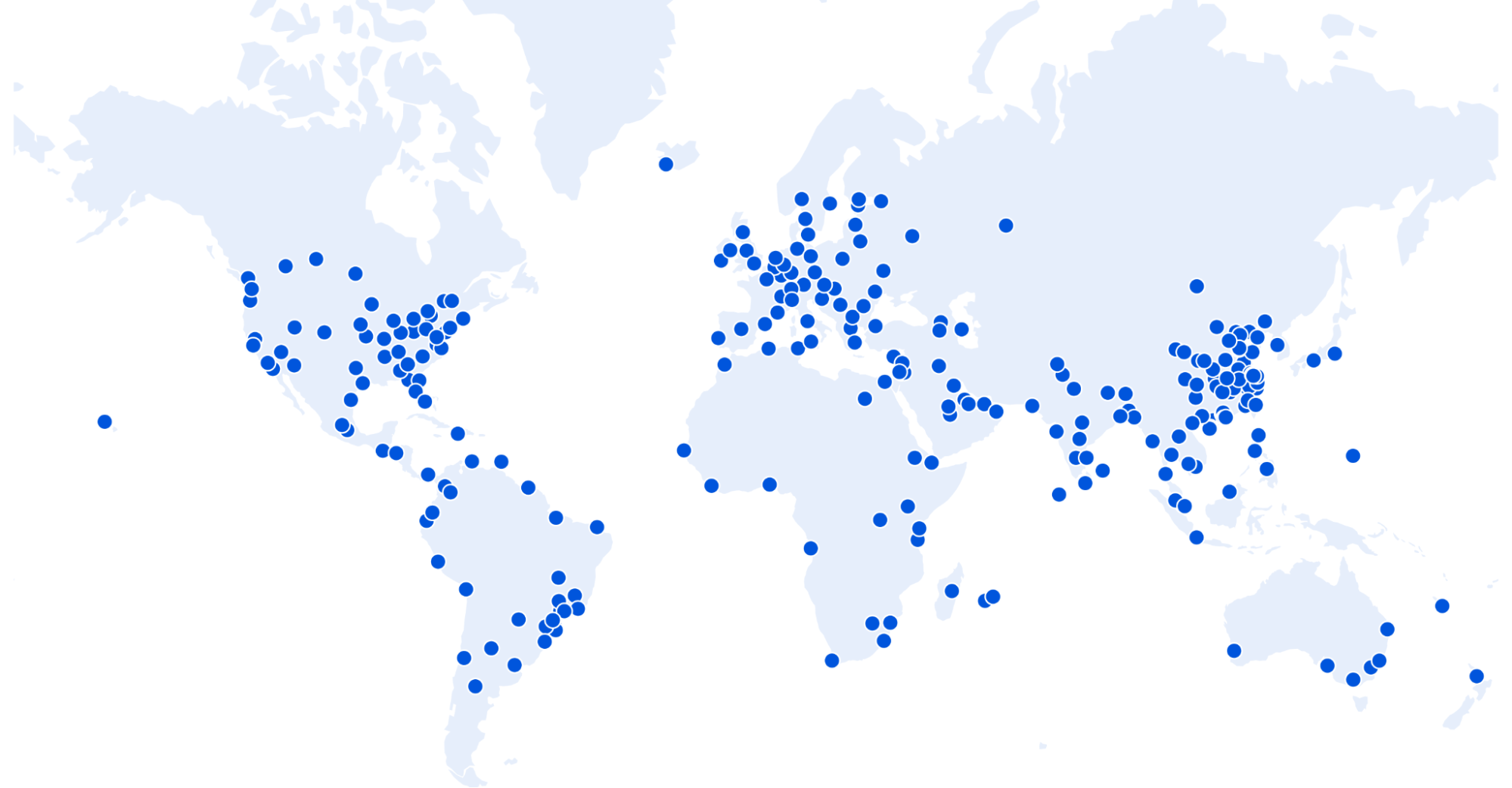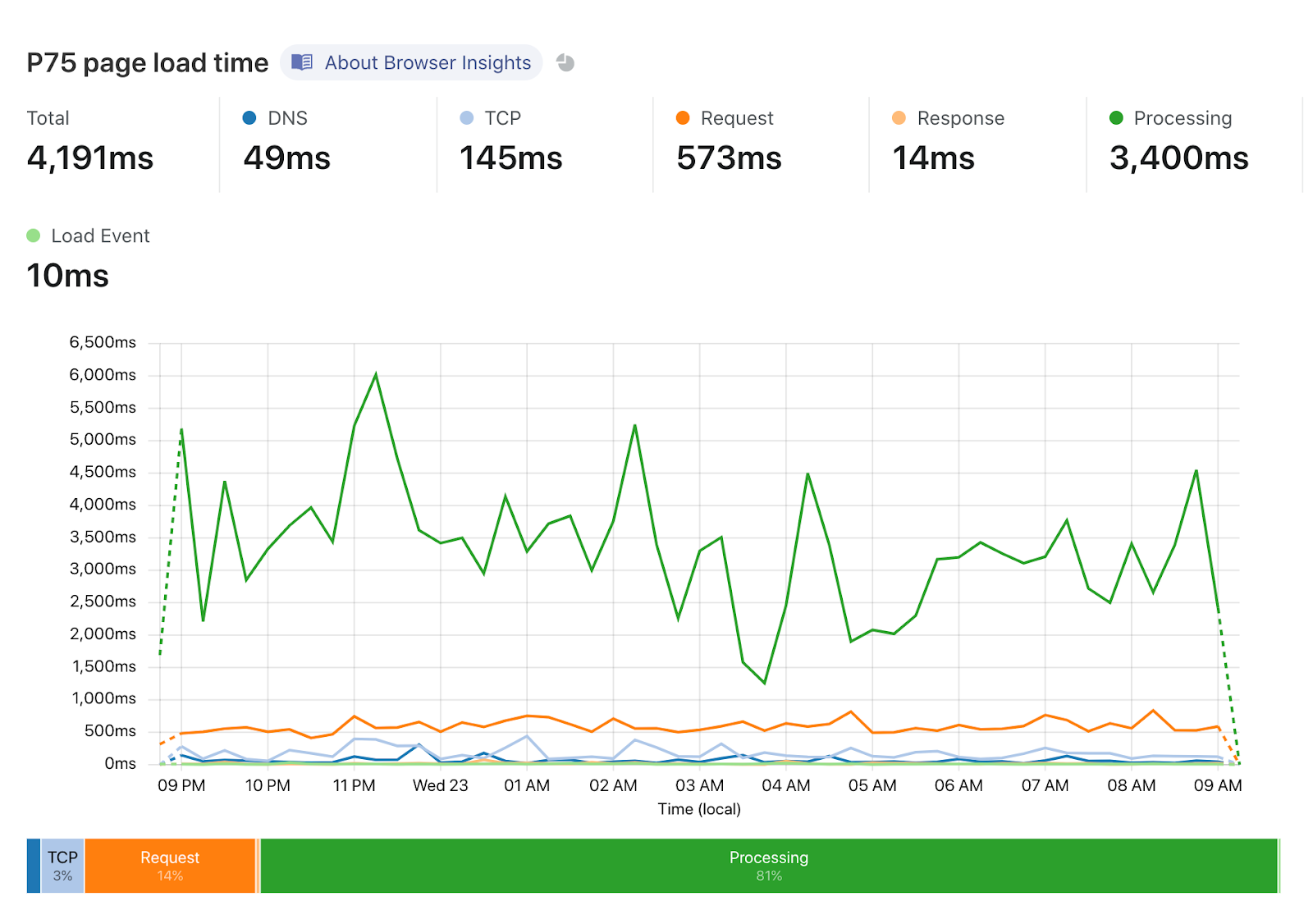
No one likes to wait — especially your customers. As the Internet gets faster, our standards get higher and our patience gets slimmer. That’s where Cloudflare comes in. Cloudflare’s global network was built to substantially cut the wait time. Cloudflare’s Speed Week highlighted the reality of what you need to do to speed up your Internet properties, including websites, IoT devices, and mobile apps. Read our 6 biggest takeaways from Speed Week so you can implement these changes right away.
Speed Takeaway 1: Use a Fast DNS Resolver
The first step in a wait-less Internet is a DNS lookup. When you type in a website address, your computer translates the name to an IP address. If the DNS lookup is slow, everything else will be slowed down because nothing can start until the IP address is known. However, if you use the world’s fastest DNS resolver, Cloudflare’s 1.1.1.1, your computer can move on to the next step in getting the web page you asked for in record time. Cloudflare 1.1.1.1 is integrated into Cloudflare’s network, so users anywhere in the world will get a quick response.

Speed Takeaway 2: Proxy Your Website Through a Global Content Delivery Network
Why is Cloudflare so fast?
Two things help make it fast: caching and closeness.
To get anything on the Internet, you need to go back and forth to a server many, many times. This is when slowness shows up. In an ideal scenario of asking for a website address and getting its IP address there’s only one round trip:
“Hello, can you tell me the address of 101domain.com?”
“Yes, it’s…”
Cloudflare speeds up this process by caching or storing a copy of data that hasn’t changed, so you don’t have to go ask for it.
The second way in which Cloudflare makes things faster is by shortening the distance to the end-user. Cloudflare has built (and continues to grow) their massive and interconnected network that just recently surpassed 250 cities worldwide. Currently, Cloudflare is located within 50 milliseconds of 95% of global Internet users. Bringing the server close to the end-user is a simple yet effective solution for creating a wait-less Internet.

A map of the world highlighting all 250+ cities in which Cloudflare is deployed
Speed Takeaway 3: Use a Secure Connection
The next step in achieving a fast Internet is establishing a secure connection. Pretty much everything on the Internet uses an encryption protocol called TLS (that’s also referred to as SSL).
TLS is a complicated protocol. All you need to know is that TLS creates a secure connection between a web browser and a server that ensures your connection to a website, let’s say your bank, is actually your bank.
So, staying on top of the latest TLS standard is vital (Cloudflare is currently on the latest version, TLS 1.3), and implementing all the tricks that speed TLS up is important. You should never be put in a situation where you have to choose between security and speed. You need both, which is why it’s helpful to use a service provider, like Cloudflare, that does everything.
Speed Takeaway 4: Combat Internet Slow-Downs
So far getting to a wait-less Internet has involved fast DNS resolvers, keeping a copy of data to serve, being close to end-users, and using the latest TLS protocols. However, there are still lots of opportunities for Internet problems to slow things down. Everyone has experienced a slow Internet before. Sometimes the Internet just doesn’t work right. The slowness is usually caused by two things: congestion and packet loss. Dealing with those is essential to giving the end user the fastest experience possible.
Cloudflare’s network is expansive in its reach. Every day, Cloudflare carries hundreds of billions of requests across their globally distributed network of customers and end-users. All of this real-time global network information paints a pretty accurate picture of how different parts of the Internet are performing at any given time. Some parts of the Internet may be congested and cause poor performance like a traffic jam. Understanding this is the first step in finding a faster route to the destination.
Technologies likeCloudflare’s Argo Smart Routing, use real-time traffic data to find the best and fastest possible path for your traffic on the Internet, improving performance and delivering more satisfying experiences to your customers and users.
Just like Waze examines real data from real drivers to give you accurate, uncongested, and sometimes unconventional routes across town, Argo uses the data Cloudflare collects to find faster, more efficient routes across the Internet.
Secure Web Accelerator Plus and Professional customers who enable Argo Smart Routing to reduce the end-user round trip times by up to 40% on average. All it takes is one click in the Cloudflare dashboard to get better, smarter routing, and make your traffic faster.

Secure Web Accelerator
Speed Takeaway 5: Optimize Your Images
One of the largest categories of content we deliver for our customers consists of static and animated images. As people start using different web browsers and device types (think of all the different screen sizes out there), delivering optimized images in the right size and format for the end-user plays a big part in a fast web experience. Images tend to be large and take a while to download, making them a ripe target for optimization.
When an image is not correctly optimized it may be much larger than needed resulting in an unnecessarily long download time. Imagine how a customer would feel if they get to your website and it takes forever to load all the images you serve. This creates a negative user experience that might lead to lower overall site traffic and high bounce rates.
On e-commerce sites, in particular, pages are usually very image-heavy, therefore the bounce rate typically has a direct monetary impact. It is critical to optimize all the images on your web pages to improve your performance in search engine rankings and, ultimately, to provide a great experience for your users.
We all know that Google and many other search engines use the loading speed as one of their ranking factors. Earlier this year Google rolled out an update called Core Web Vitals that quantifies page performance when considering search results rankings. The three Core Web Vitals include Largest Contentful Paint (LCP), First Input Delay (FID), and Cumulative Layout Shift (CLS). They approximate the experience of loading, interactivity, and visual stability respectively.

CLS and LCP are the two metrics Secure Web Accelerator Plus and Professional customers can improve by optimizing images and can measure in the Cloudflare dashboard.
101domain can run a series of automated tests to determine if there are any possible improvements you could make in delivering optimal images to visitors. For more information, please reach out to a member of our sales team.
Contact Us: +1.888.982.7940 | [email protected]
Speed Takeaway 6: Use Web Analytics to Evaluate User Experience
One thing Cloudflare has always done well and continues to stay focused on is making the Cloudflare dashboard easy to use. A benefit of upgrading to Secure Web Accelerator Plus or Professional is getting access to the Cloudflare dashboard and analytics. Cloudflare Web Analytics makes essential web analytics, such as the top-performing pages on your website and top referrers, easily accessible.
How Cloudflare delivers value to users with Web Analytics:
- Measure the real user experience
- Grade this experience — is it satisfactory or in need of improvement?
- Provide actionable insights — what part of the web page should be tweaked to improve the user experience?
- Repeat
Secure Web Accelerator Plus and Pro customers can evaluate visitors’ experience on their website for LCP, FID, and CLS. Each Core Web Vital has a graph where you can see the top five elements on your pages that are affecting users the most with accurate measurements from the visitor’s perspective and an easy-to-read impact grading.

You will also see a page load summary and graph representing page load timing that will allow you to quickly identify any regressions to these important performance metrics.

Page load times have a significant effect on bounce rates. A page load time increase from 1s to 3s increases bounce rates by 32% and from 1s to 6s increases it by 106% (source).
Final Takeaway
Cloudflare’s network can be compared to the fast lane on a busy freeway. While traffic in the normal freeway lanes can be backed up from congestion and accidents, vehicles who are in the fast lane get to bypass the traffic slowdowns and get to their destination much quicker. Customers who proxy their websites through Cloudflare using Secure Web Accelerator reap immediate advantages of improving redundancy and reducing website loading times by up to 45% — and you don’t have to do a thing.